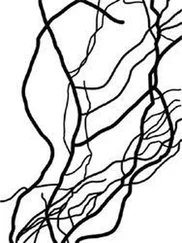“So the evaluation has to be conducted with all of these elements borne in mind. My position is that I don’t believe anybody: I only believe the data. That’s what I present to the police, to the prosecutors, and to the judges if the case gets to court. And you know what? They get frustrated with me. Like I said, they want definite answers, but a lot of the time we can’t give them those answers.
“That’s where Daniel Clay and I differed. There are some evaluators out there who have almost a political position on abuse. They believe that it’s rampant, and they interview children with the presumption that abuse has occurred. It colors everything that follows. Clay became the go-to guy to confirm abuse allegations, whether in the first instance or where a lawyer decided to seek a second opinion on abuse. That was what got him into trouble.”
“Okay, can we go back to the Muller case for a moment?”
“Sure. Erik Muller. It’s a matter of record. The papers reported a lot of the details at the time. It was a nasty divorce case, and the wife wanted custody. It seems like she may have pressured her son, who was then twelve, into making allegations against his father. The father denied the allegations, but Clay offered a pretty damning evaluation. There still wasn’t enough evidence for the D.A. to indict, so it went to Family Court, where the burden of proof is lower than at criminal level. The father lost custody and killed himself a month later. Then the child recanted to a priest, and it all came out. Clay went before the Board of Licensure. It took no action against him, but the whole thing looked bad, and he ceased to do case evaluations shortly afterward.”
“Was that his decision, or was it forced upon him?”
“Both. He decided not to conduct evaluations again, but he would not have been offered them even had he decided to continue. By that time, we had been up and running for some time, so the burden of evaluation in most cases fell on us. Well, I say ‘burden,’ but it was one that we were willing to accept. We’re as committed to child welfare as Daniel Clay ever was, but we never lose sight of our responsibilities to all of those involved and, most of all, to the truth.”
“Do you know where the Muller boy is now?”
“Dead.”
“How?”
“He became an addict and died of a heroin overdose. That was, um, about four years ago, up in Fort Kent. I don’t know what happened to the mother. Last I heard, she was living somewhere in Oregon. She married again, and I think she has another child now. I hope she does better with this one than the last.”
It sounded like the Muller angle wasn’t going to lead anywhere. I moved on to the subject of the abuse of some of Clay’s patients. Christian seemed to have the details at his fingertips. Maybe he had gone over them before I arrived, or it could simply have been one of those cases that nobody was very likely to forget.
“Two cases of alleged abuse were referred to us in the space of three months,” said Christian, “each with similar elements: alleged stranger abuse, or abuse by someone apparently unknown to the child, and the use of masks.”
“Masks?”
“Bird masks. The abusers-three in one case, four in the other-disguised their faces with bird masks. The kids-the first a twelve-year-old girl, the second a fourteen-year-old boy-were abducted, one on the way home from school, the other while drinking beer by a disused railroad track, then taken to an unknown location, systematically abused over a period of hours, then dumped close to where they’d been abducted. The alleged abuse had occurred some years back, one in the mideighties and another at the start of the nineties. The first case emerged after a suicide attempt by the girl shortly before she was due to be married at the tender age of eighteen. The second came about when the boy went before the courts on a whole range of misdemeanor offenses and the lawyer decided to use the alleged abuse as mitigation. The judge wasn’t inclined to believe him, but when the two cases came to us, the similarities were impossible to ignore. These kids didn’t know each other and came from towns a hundred miles apart. Yet the details of their stories matched perfectly, even down to details of the masks used.
“You know what else they had in common? Both children had been treated by Daniel Clay in the past. The girl had made allegations of abuse against a teacher that turned out to be untrue, motivated by a belief that the teacher was secretly attracted to one of her friends. It was one of the rare instances where Clay’s evaluation did not find reason to support the allegations. The boy was sent to Clay after he’d engaged in inappropriate sexual contact with a ten-year-old girl in his class. Clay’s evaluation suggested possible indicators of abuse in the boy’s past, but went no further. Since then, we’ve uncovered six more cases with the bird element to them: three of those involved were former patients of Daniel Clay, but none of the cases took place after his disappearance. In other words, there have been no new reports of similar incidents since late 1999. That doesn’t mean that they haven’t occurred, but we haven’t heard about them. Most of the children involved were also, um, slightly troublesome in certain ways, which is why the allegations took so long to emerge.”
“Troublesome?”
“Their behavior was antisocial. Some had made allegations of abuse before, which may or may not have been true. Others had engaged in criminal activity, or had simply been allowed to run wild by parents or foster parents. Taken together, it might have made authority figures less willing to believe them, even if they had made an effort to talk about what had taken place, and police, especially male cops, tend to be reluctant to believe allegations of abuse from teenage girls in particular anyway. It also made the children in question vulnerable since nobody was inclined to look out for them.”
“Then before anyone could ask Clay about all of this in detail, he disappeared?”
“Well, most of the cases emerged subsequent to his disappearance, but that’s about right,” said Christian. “The problem for us is that we’ve had to wait for indications of similar abuse to come to us instead of being able to seek out the children for ourselves. There are issues of patient confidentiality, sealed records, even the natural dispersal of families and children that occurs over time. Any child who had undergone abuse similar to what I’ve outlined to you would be in his or her late teens at least by now, given that the victims of whom we’re aware were aged between nine and fifteen at the time when the abuse is alleged to have occurred. To put it simply, we can’t really place an advertisement in the newspapers asking people who may have been abused by men in bird masks to come forward. It just doesn’t work that way.”
“Any suggestion that Clay could have been one of the abusers?”
Christian let out a long breath. “That’s the big question, isn’t it? There were certainly rumors, but did you ever meet Daniel Clay?”
“No.”
“He was a tall man, very tall, six-six at least. Very thin. All in all, he was quite distinctive-looking. When we went back over those cases, none of the children involved described any of their alleged abusers in terms that could be applied to Daniel Clay.”
“So it could be a coincidence that some of these kids were his patients?”
“It’s certainly possible. He was well known for dealing with children who claimed to have been abused. If someone was sufficiently committed, then it’s possible that children could have been targeted because they were his patients. Perhaps someone among the various professions involved with the children along the way might also have leaked details, whether deliberately or accidentally, although our own inquiries have proved negative on that front. It’s all supposition, though.”
Читать дальше












